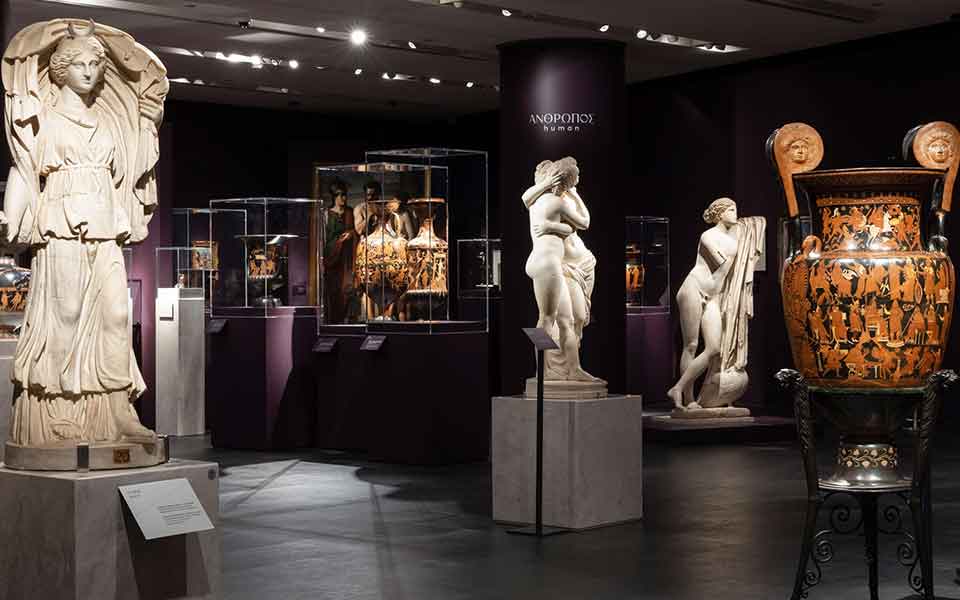By Nicholas Zois
The latest temporary exhibition to open at the Acropolis Museum in Athens includes 164 artworks, half of which have been loaned from their respective museums for the first time – a difficult task considering that nearly 30 of those institutions are based abroad. There are many standout objects, but the overall result is both coherent and meaningful and, at times, “magical.”
At a press conference following the official launch on December 5th of the new NoHMATA exhibition, “Meanings. Personifications and Allegories from Antiquity to the Present Day,” the director of the Acropolis Museum and curator of the exhibition, Professor Nikolaos Stampolidis, was unsurprisingly bombarded with questions about the Parthenon sculptures. These came in the wake of the recent diplomatic spat between the UK prime minister, Rishi Sunak, and his Greek counterpart, Kyriakos Mitsotakis.
“We want the sculptures, the architectural sculptural decoration of the Parthenon, permanently reunited in Athens,” Stampolidis said emphatically. “This was the case with the recent return of the Fagan fragment and the three pieces from the Vatican, which have all come back and remained here, without anything in return – forever, “ he continued.
His response was preceded by a question regarding the unprecedented loan of antiquities from the British Museum for the exhibition, including eight vases from its collections. He was asked whether the loan of artworks from the London-based museum will set a precedent for the ongoing negotiations over the fate of the Parthenon sculptures, which Greece would never accept as a “loan.”
“It is one thing to borrow objects for a temporary exhibition and another thing to borrow the Parthenon sculptures,” the director replied, stressing that there is currently no official proposal on the table that resolves the thorny issue of their ownership.
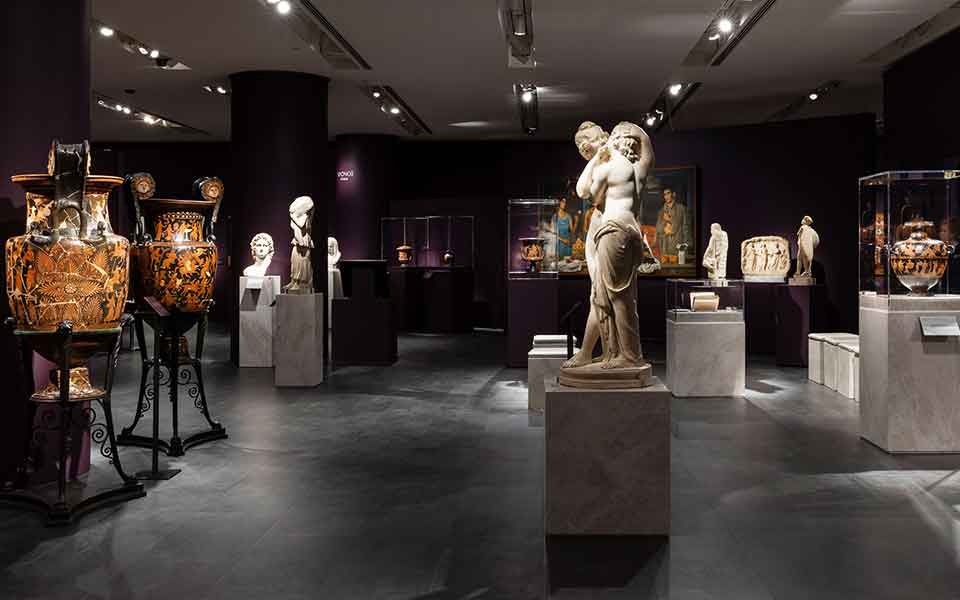
© Paris Tavitian
He went to clarify that the relations between the Acropolis Museum and the British Museum are excellent. “We hope the sculptures will be returned soon. The Parthenon is a symbol of harmony, architecture and democracy, as it was the first time that Phidias and the others sculpted all the representatives of democracy in the Parthenon temple’s nave,” adding that in the current 21st century context of crises, wars and pandemics, the Parthenon, which he described as the ancestral home of Western civilization, must be reunited with its sculptural decoration.
“To my friends at the British Museum,” he continued, “I always say that you will be the protagonists of morality and democracy. If the leaders of the British Museum do that, you will be remembered forever.”
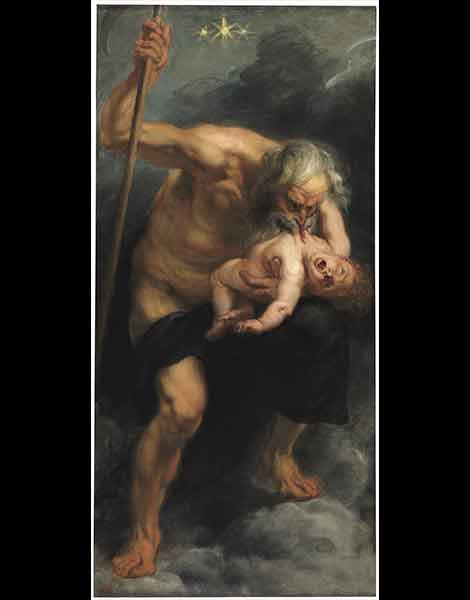
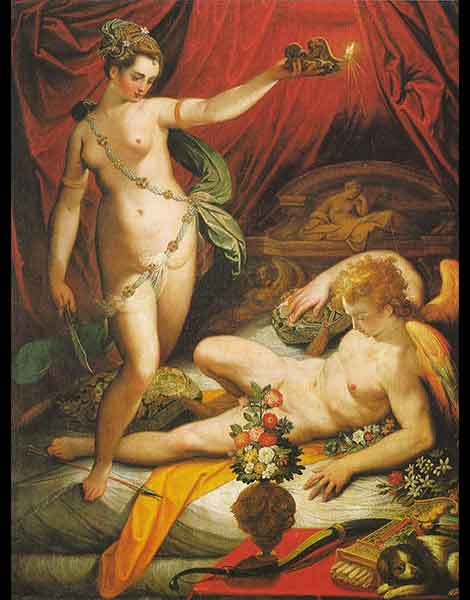
During our tour of the exhibition, we saw many interesting artworks, including Rubens’ masterpiece “Saturn (Cronos) Devouring His Children” (1636-1638), on loan from the Museo del Prado in Madrid. In this remarkable painting, Cronos, the personification of Time, is seen eating his children, which can be interpreted as “the past eating the present and the future.”
In Jacopo Zucchi’s painting, “Amor and Psyche” (1589), which has traveled to Athens from the Galleria Borghese in Rome, we see Psyche, driven by curiosity, revealing the identity of her mysterious lover (Cupid) by the light of an oil lamp. An Attic amphora of 520 BC, which has come on loan from Vienna, “Justice” prepares to strike “Injustice” with a hammer. “That says a lot in all times,” noted Stampolidis, adding that Injustice is depicted with a tattoo on her hand, something that would have been highly unusual for Athenians. As such, she may have been considered “foreign.”
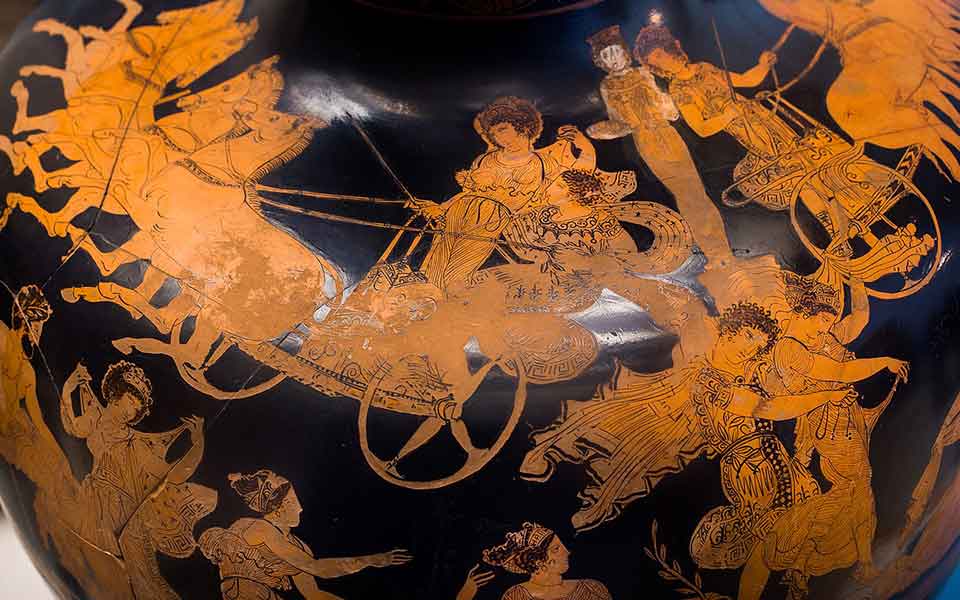
© Public domain
The Meidias Hydria
The famous Meidias Hydria (420 BC), one of eight vases on loan from the British Museum, has left London for the first time in 250 years. Stampolidis remarked that it was not a vase for everyday use, and mainly resembles the large water jugs that appear in the Panathenaic Procession, depicted on the frieze of the Parthenon.
As for “The Calumny of Apelles” (1530), from Botticelli’s workshop, it is “the allegory of allegories,” said the director, before explaining that the depicted king wears donkey’s ears because he “listens to what he is told” and that the personification of Slander is dragged by the hand by Envy and made up by Deception.
How do the above relate to each other? They are works with personifications, symbolisms and allegories of the concepts that make up all six sections of the exhibition: Time, Nature, Deities, Man and Human Nature, Institutions, Allegories and an Epilogue. The central thread of the exhibition, which runs until April 14, 2024, is “how Greek antiquity conceives, designs and renders an idea and how it then passes and runs through subsequent periods until today,” concluded Stampolidis, emphasizing that the thread remains strong.
This article was previously published in Greek at kathimerini.gr.

